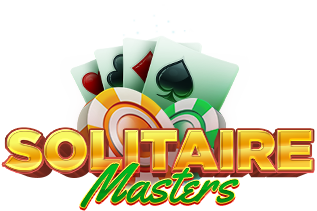Online solitaire card games are a timeless favorite for casual gamers, but ensuring players stick around and stay engaged can be a challenge in today's competitive gaming market. Whether you're running a newly launched app or a well-established solitaire platform, boosting player engagement and retention is key to long-term success. This article will explore strategies to captivate your audience, keep them coming back, and turn casual players into loyal fans.
Personalize the Player Experience
Players love feeling like the game is tailored to their preferences. Adding personalization options can enhance their connection to your solitaire app and encourage them to spend more time playing.
Customizable Features
Allow players to customize their card decks, backgrounds, or soundtracks. Options to select themes like vintage, modern, or seasonal designs can make the game feel unique and engaging. Providing free designs alongside premium ones can also introduce an upselling opportunity without alienating free players.
Difficulty Levels
Offer different difficulty settings to cater to a wide range of players. From casual gamers who want a relaxing experience to competitive players seeking a challenge, adjustable levels ensure everyone finds enjoyment.
Player Profiles
Introduce player profiles that track progress, achievements, and play history. Adding leaderboards and trophies for milestones can spark healthy competition and drive players to invest more time in the game.
Create Incentives for Daily Play
Incentives are a proven way to keep players returning day after day. Gamers enjoy rewards, especially when they feel like they've earned them through regular engagement.
Daily Rewards
Implement a daily login reward system that gives players coins, power-ups, or exclusive designs for consecutive days of play. This not only increases retention but also keeps players curious about the next reward.
Challenges and Missions
Introduce daily or weekly challenges that reward players for completing specific tasks, such as achieving a certain score or completing a game in under a set time. These challenges add variety to the gameplay and keep players motivated.
Seasonal Events
Seasonal events are a great way to build excitement. For example, a winter-themed solitaire event with unique designs and limited-time rewards can boost engagement during holiday seasons.
Build a Community Around Your Game
Solitaire may be a single-player game, but that doesn't mean players want to feel isolated. Building a community around your game helps foster a sense of belonging and encourages players to stay engaged.
Social Media Presence
Use platforms like Instagram, Twitter, and Facebook to connect with your players. Share updates about your game, host polls, or create relatable solitaire-themed memes to spark conversations. Social media also provides a space for players to share their achievements and interact with others.
In-Game Social Features
Incorporate features like leaderboards, friend challenges, or even chat options to encourage interaction between players. Friendly competition can enhance the overall experience and give players a reason to return.
Player Feedback Channels
Create an easy way for players to share feedback or suggestions, such as an in-game form or email link. Showing players that their opinions matter helps build trust and fosters a sense of loyalty.
Use Analytics to Drive Improvements
Understanding player behavior is essential for improving engagement and retention. Use analytics tools to gain insights into how players interact with your game.
Track Player Patterns
Identify when players are most active and what features they enjoy the most. Use this data to schedule events, release updates, or tweak game elements to align with player preferences.
Identify Drop-Off Points
Analytics can highlight when and why players leave your game. Whether it's due to overly frequent ads, a frustrating level, or lack of progression, addressing these pain points can improve player satisfaction.
Test New Features
A/B testing is invaluable when introducing new features or updates. Test different versions of your designs, rewards, or difficulty levels to see which options resonate best with players.
Monetization Without Compromising Engagement
While monetization is a vital part of your business model, it's essential to strike a balance that doesn't alienate your players. Engagement and retention will naturally improve if players feel the game is fair and enjoyable.
Fair Ad Placement
Advertisements are a common revenue stream, but too many can frustrate players. Limit ads to natural breaks, such as after completing a game, and consider offering rewarded ads that let players choose to watch in exchange for perks.
Optional Premium Features
Provide optional purchases like ad removal, exclusive designs, or additional hints. This allows paying players to enhance their experience while keeping the base game enjoyable for free users.
Subscription Options
Introduce a subscription plan with benefits like unlimited hints, early access to updates, and exclusive game modes. Subscriptions create a steady revenue stream without disrupting gameplay for free players.
Moving Forward with a Strong Engagement Plan
Improving engagement and retention for an online solitaire card game is about understanding what players love and delivering it consistently. By personalizing the experience, offering incentives, fostering community, and using data to guide your decisions, you can create a game that keeps players coming back for more. With these strategies, your solitaire business can grow into a thriving platform that combines entertainment with profitability. Start implementing these ideas today and watch your player base flourish.
